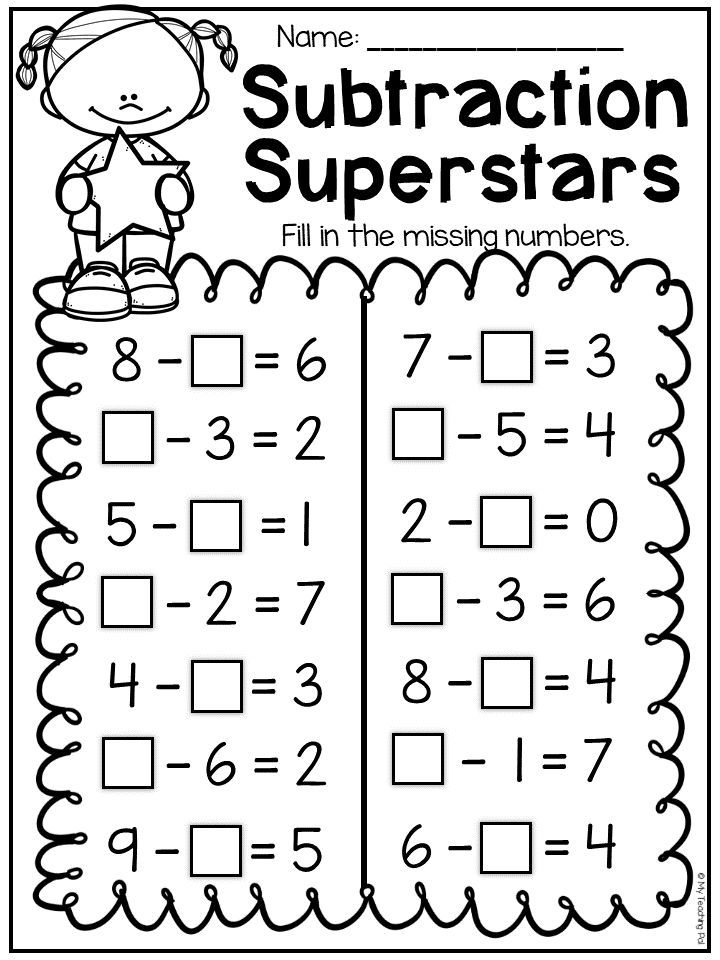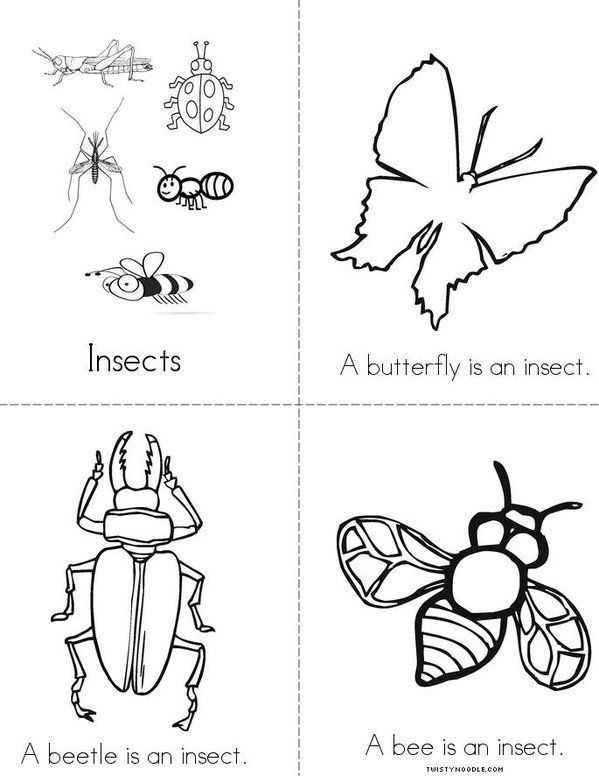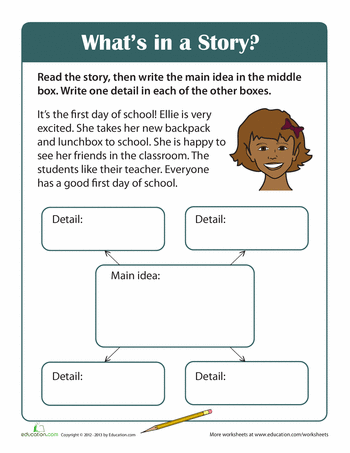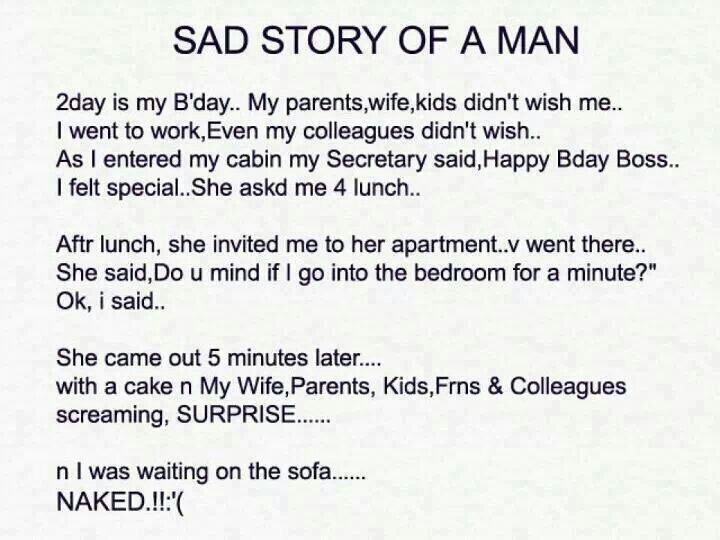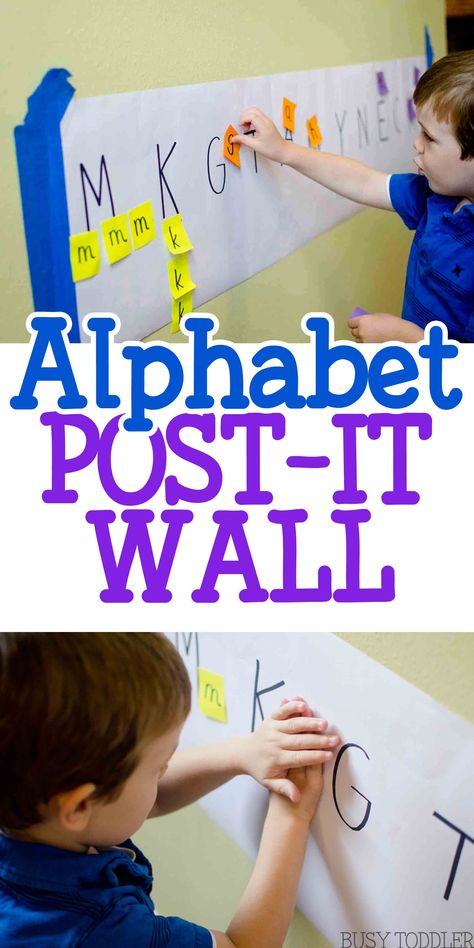Math help for first graders
First Grade Math Tips
Hoping to help your first-grader with math skills? Here are some basic tips that experts suggest.
Learn math from everyday objects
Your child can build an understanding of addition, subtraction, and the other math concepts they are learning in first grade by playing with everyday objects. Use items that your child enjoys playing with, such as Legos, and place them into two groups of unequal number. Place the larger grouping on the left to develop the habit your child will need later for subtracting from left to right. Next, ask your child to add objects to the smaller group from the larger group until your child counts the same number in both groups. As with all math activities, don't push it if your child resists, since math development varies greatly from child to child and your child may just not be ready for certain concepts.
Count with itemsCount using items like blocks, pennies, and candy. Have some items handy for counting by ones and by tens. You can use interlocking blocks that allow students to connect two blocks to three blocks to represent 2 + 3. Use regular household items like pennies for counting by ones, and dimes for counting by tens.
When things are stored or poured into varying size containers you have an opportunity to build your child's concept of estimation and quantity. At breakfast, ask their which bowl has more and which has less cereal. Ask them to compare the different amounts of the same liquid in three clear glasses by lining them up from least to most full. To build your child's vocabulary of comparisons, after successful practice use measuring cups with numbers. Ask their what your child notices about the number each liquid reaches in the measuring cup when they are lined up in sequence from least to most and then from most to least full.
Read math problems aloudHelp your child by reading math problems aloud slowly and carefully, so your child can hear the problem and think about what is being asked.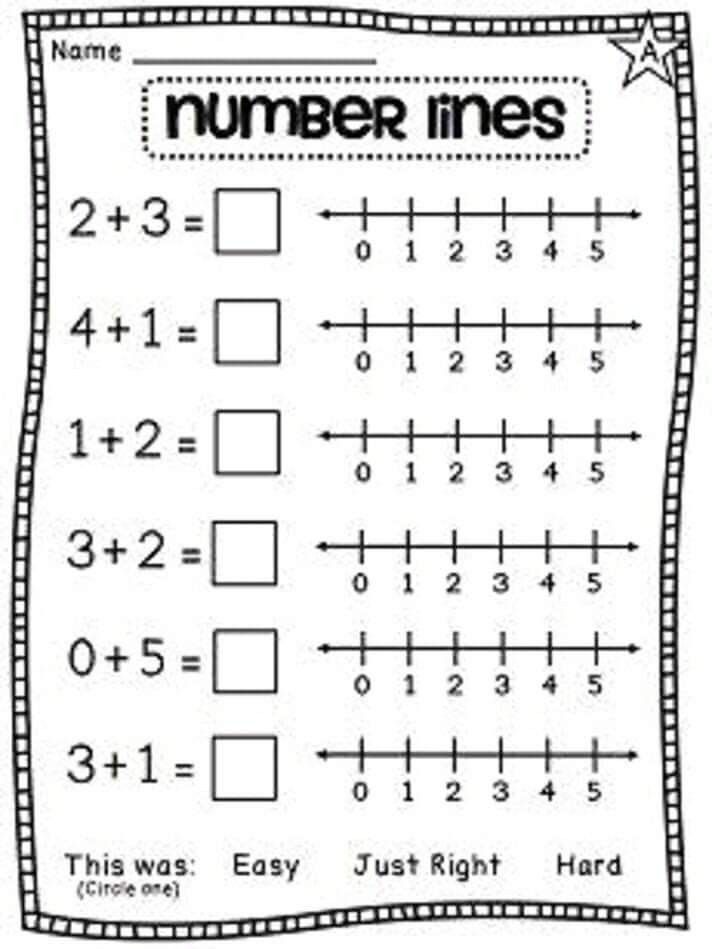 If your child can read, have them read them.
If your child can read, have them read them.
Children become so accustomed to seeing their parents pay with credit and debit cards that counting actual money can be an unfamiliar practice. Engage your child in the transaction of buying things at the store, allowing them to pay with cash and to count the change. This will help not only with their math skills but will foster an understanding of the concepts of saving and spending.
Reward effort for mathSpeak positively about math and reward effort, rather than grades or ability. Think about how important reading is and how we are told to model this behavior for our children. We need to place math in the same category. Don't discount the importance of math by saying, "I'm not a math person, I was never good at math." Help your child read books that incorporate math, such as "Millions of Cats" by Wanda Gag or "On Beyond a Million'" by David Schwartz.
Use analog clocksGo pre-digital with time.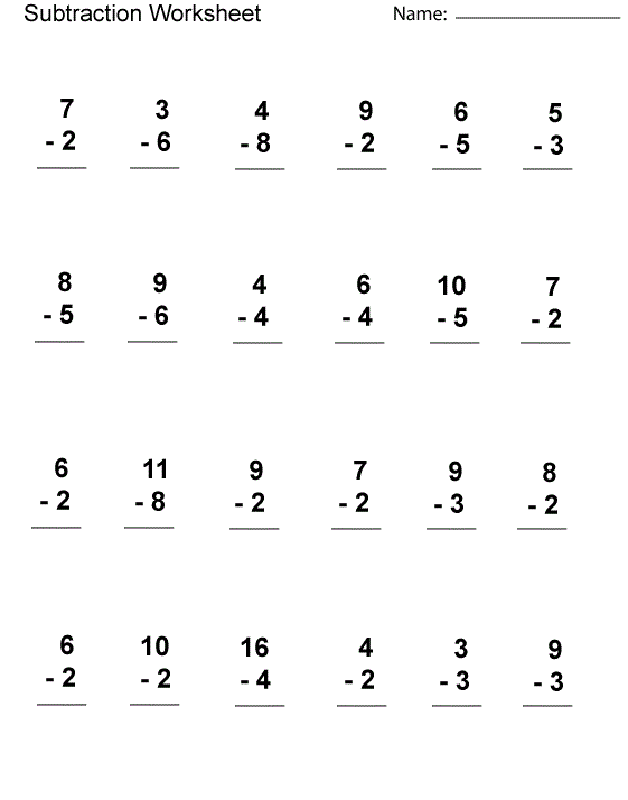 Reading time on a digital clock is vastly different than on a clock with a face. First grade standards focus on telling time to the hour and half hour, so have some old-fashioned analog clocks around your house as your child is learning to tell time. Consider giving their a wristwatch with a face, rather than a digital display.
Reading time on a digital clock is vastly different than on a clock with a face. First grade standards focus on telling time to the hour and half hour, so have some old-fashioned analog clocks around your house as your child is learning to tell time. Consider giving their a wristwatch with a face, rather than a digital display.
Keep a calendar displayed in your home. Review the days of the week with your child and encourage their to count down the number of days until an event they are anticipating.
Play games with simple mathPlay a game in the car using simple addition or subtraction. For example: I'm thinking of a number that equals seven when it is added to three. What number is that? Look for opportunities to play simple addition and subtraction games, for example, while they are eating, with the number of items on their plate.
Play games with math vocabularyPlay a mind-reader game.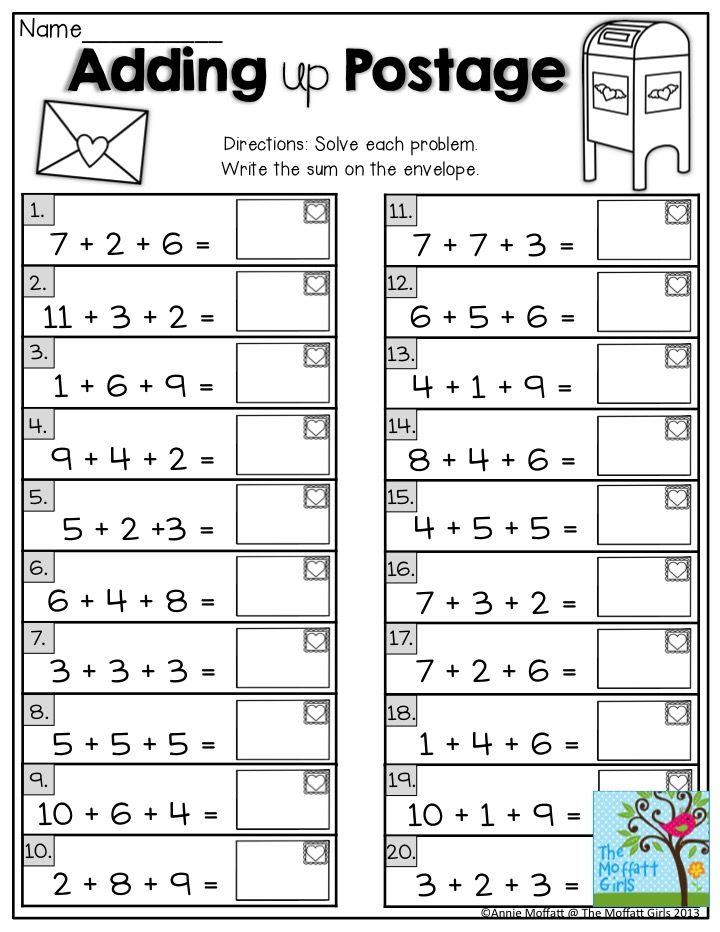 Think of a number for your child to guess. After each guess respond with the words "higher" or "lower." At different times use the words "more" or "less" so your child learns different arithmetic vocabulary. This game helps their correlate the number words and counting sequence with actual amounts or sizes.
Think of a number for your child to guess. After each guess respond with the words "higher" or "lower." At different times use the words "more" or "less" so your child learns different arithmetic vocabulary. This game helps their correlate the number words and counting sequence with actual amounts or sizes.
Plenty of family games incorporate math. Tic-tac-toe, Connect Four, and dominoes are just some of the many games that help build math skills.
To find out what your first-grader will be learning in math class, check out our first grade math skills page.
Parent Toolkit resources were developed by NBC News Learn with the help of subject-matter experts, including Joyce Epstein, Director, Center on School, Family and Community Partnerships, Johns Hopkins University; Pamela Mason, Program Director/Lecturer on Education, Harvard Graduate School of Education; Denise Walston, Director of Mathematics, Council of the Great City Schools; Nell Duke, Professor, University of Michigan; Leanna Baker, Retired Math Teacher; Bon Crowder, Math Teacher and Blogger, MathFour. com; and Robin Schwartz, VP, Association of Teachers of Math of NYC, and align with the Common Core State Standards.
com; and Robin Schwartz, VP, Association of Teachers of Math of NYC, and align with the Common Core State Standards.
1st Grade Math Skills, What Your Child Will Learn, Komodo Math
- Math Tips
- Education
- 1st
Your child is heading to first grade! After the year in kindergarten, your first grader will be ready for some amazing growth. For many children, first grade is the year that they bloom as readers and mathematicians. Get ready to support your child’s mathematical growth by learning about first grade math skills.
In first grade, you can expect your child to learn about:
1. Addition and subtraction facts to 20
Now that your child has mastered the idea of adding and subtracting, they’re ready to practice math facts. This means getting faster when answering addition and subtraction problems to 20.
Help your child develop fluency by asking basic addition and subtraction problems - we find that using treats can help keep kids interested! If your first grader needs support, encourage the use of physical objects or fingers as problem-solving tools.
2. Addition and subtraction as inverse operations
Your child probably understands the concept of addition as “putting together” and subtraction as “taking apart.” In first grade, children are encouraged to see the connections between addition and subtraction. Your child will learn how addition and subtraction are inverse operations, or that one is the opposite of the other, and create “fact families” of related addition and subtraction problems.
When working with addition and subtraction, ask your child to see connections. For example, if your child has four dolls and three cars, ask how many toys there are in all. Then ask how many toys there would be if the four dolls are taken away.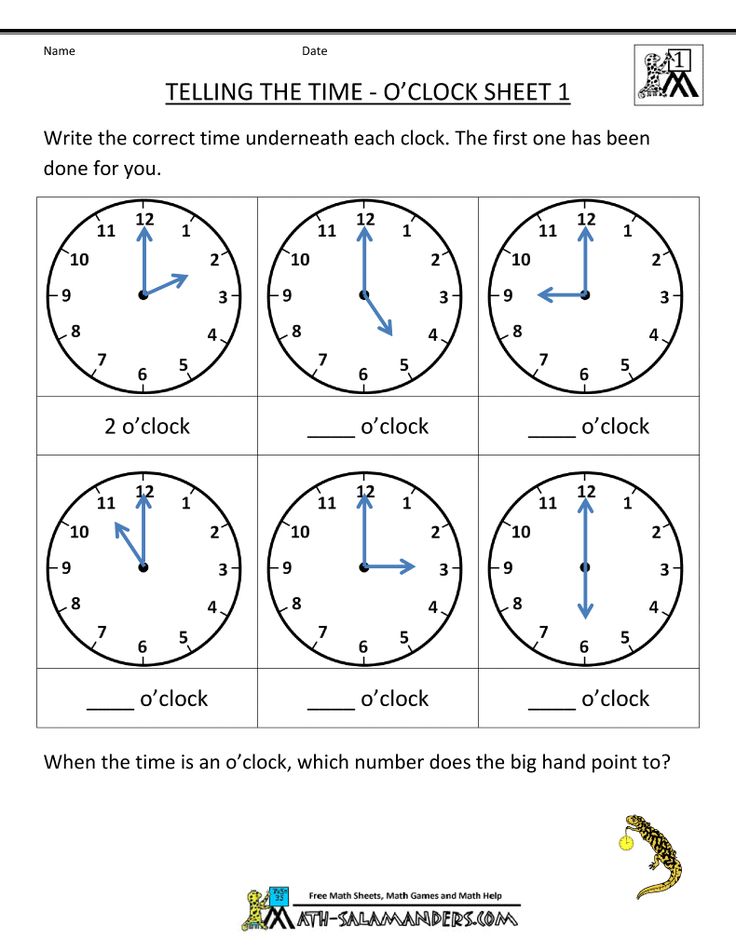
3. Count and write within 120
Your child has probably mastered counting to 20. But in first grade kids will learn to count all the way up to 120! That’s not all. Kids will be expected to not only count, but write, the numbers. This is great practice for understanding multi-digit numbers.
At home: Encourage your child to write numbers whenever possible. Talk about how two-digit numbers are made up of tens and ones and how three-digit numbers are made up of hundreds, tens, and ones. Just looking closely at multi-digit numbers together can be a great learning opportunity.
4. Add within 100
Now that your child has an understanding of numbers past 100 as well as basic addition and subtraction facts, it’s time to practice adding within 100. Children will practice adding one-digit numbers to two-digit numbers using strategies like counting on and number charts. Children can practice adding larger numbers with the help of a 1-100 chart.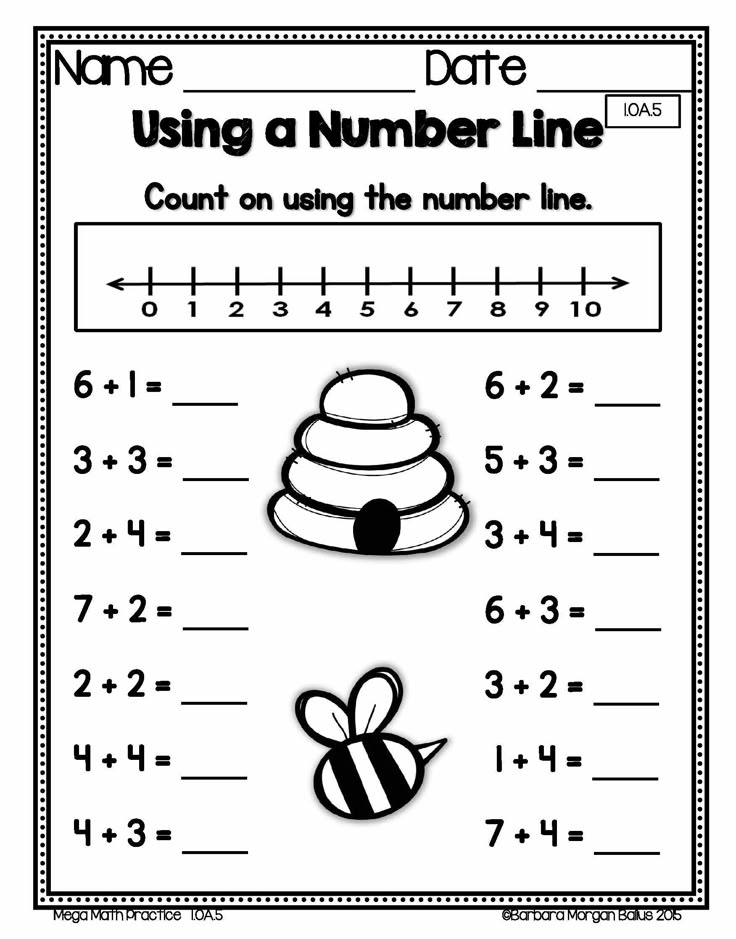
First graders are also ready to practice adding and subtracting 10s to and from two digit numbers.
At home: Help your child see patterns when adding and subtracting 10s. For example, after solving a problem like 59 - 10 = 49, point out to your child that 49 has one less 10 than 59. This is another great way to learn about place value.
5. Measure objects
In first grade, kids learn how to measure using rulers and more unusual things like paper clips. After taking measurements, children compare and order objects by length.
At home: Kids love measuring things around the house, so keep a couple of rulers handy. Pay attention to how your child is using a ruler and taking measurements. Sometimes kids don’t quite measure from end to end, so they might need a bit of help.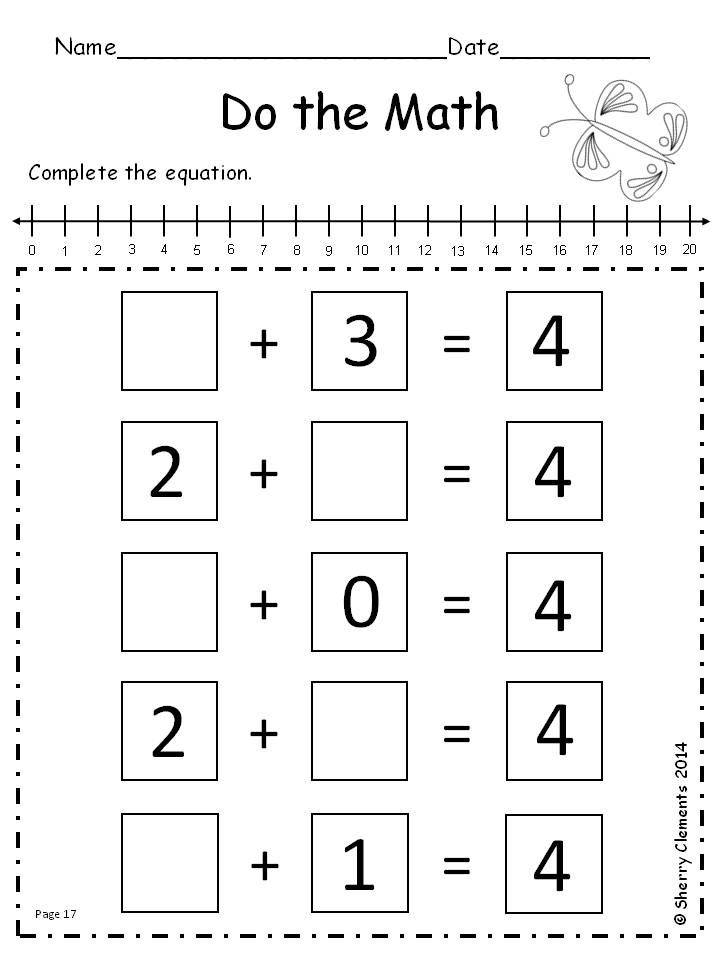 ..
..
6. Tell time to hour and half hour
One of the trickiest concepts first graders will learn is to tell time. Using analog clocks is confusing, especially when kids are more used to seeing digital clocks. In first grade, your child will learn about the big and little hands of a clock and will practice telling time to the hour and half hour.
At home: Get hold of an analog clock for your home (either a real one or one made just for learning). Talk with your child about the time and how the hands move around the clock. Remember to just focus on telling time to the hour and half hour to start!
7. Understand basic fractions
First graders also get an introduction to fractions as equal shares. They will learn how to divide into equal groups and learn basic fractions like ½, ⅓, and ¼. First graders usually have a good understanding of fairness, so practicing making equal shares should be a relatively easy task for them!
At home: Help your child to divide pizzas, pies, and sandwiches into equal shares.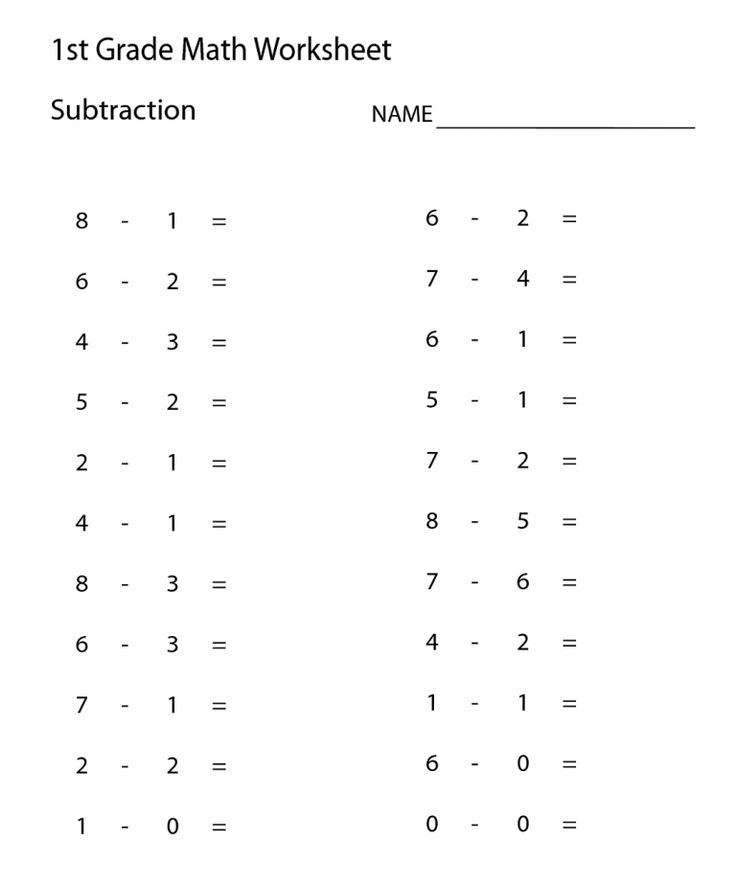 As you do, talk about the fractions of the whole that you created.
As you do, talk about the fractions of the whole that you created.
First graders are ready to dive deep into mathematical concepts. Find time to connect with your child about classroom learning and get ready to have some fun!
Found this useful? Check out our grade by grade math guides from Kindergarten to 5th grade
Written by Lily Jones, Lily loves all things learning. She has been a kindergarten & first grade teacher, instructional coach, curriculum developer, and teacher trainer. She loves to look at the world with curiosity and inspire people of all ages to love learning. She lives in California with her husband, two kids, and a little dog.
About Komodo – Komodo is a fun and effective way to boost K-5 math skills. Designed for 5 to 11-year-olds to use in the home, Komodo uses a little and often approach to learning math (15 minutes, three to five times per week) that fits into the busy family routine. Komodo helps users develop fluency and confidence in math – without keeping them at the screen for long.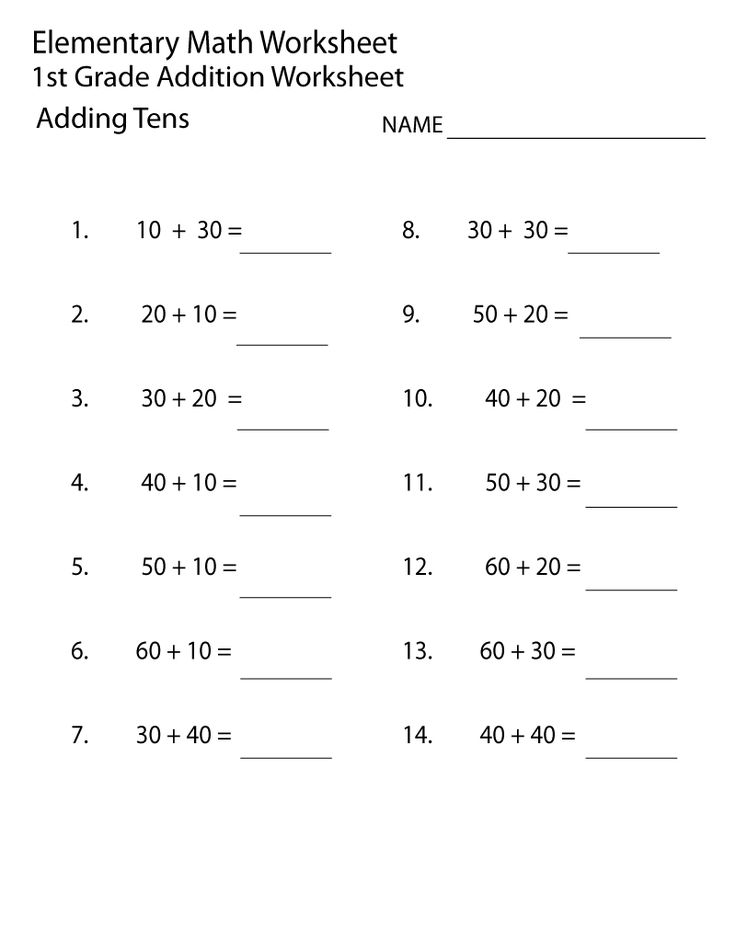
Find out more about Komodo and how it helps thousands of children each year do better at maths – you can even try Komodo for free.
Back to School - 5 Tips to Help you Ease Back into the Routine
Here are some steps you can take to ease children back from full vacation mode so that the first week of school doesn't knock you sideways.
Mindset - The Path to Mastery
People who have a growth mindset believe that they always have the potential to learn and improve. They are more motivated to persevere with difficult tasks, to take risks and to learn from failure.
Math games for preschoolers and first graders
The development of a child's mathematical abilities is one of the aspects of preparing for school. It can be difficult for a preschooler to operate with numbers, so experts advise starting a child’s acquaintance with numbers and mathematical calculations from games. Complex and sometimes boring examples and tasks do not cause rejection in the baby when they are presented in the form of interesting colorful tasks.
Complex and sometimes boring examples and tasks do not cause rejection in the baby when they are presented in the form of interesting colorful tasks.
If a child understands at an early age that mathematics is exciting and fun, it will be much easier for him to master the school subject. By the way, mathematical games develop not only the skills of working with numbers, but also logic and non-standard thinking. What are the mathematical games for preschoolers - in our material. nine0003
Math games for children 4-5 years old
Math games for preschoolers 4-5 years old include simple math examples for addition and subtraction within 10.
1. Math game "Labyrinth"
In this math game the child is faced with the task of seeing the pattern, going through the maze and helping the squirrel find the acorn.
Print the picture. Give the child a pencil. Let him draw a path along which the squirrel can get to the acorn. nine0003
The squirrel has started its journey.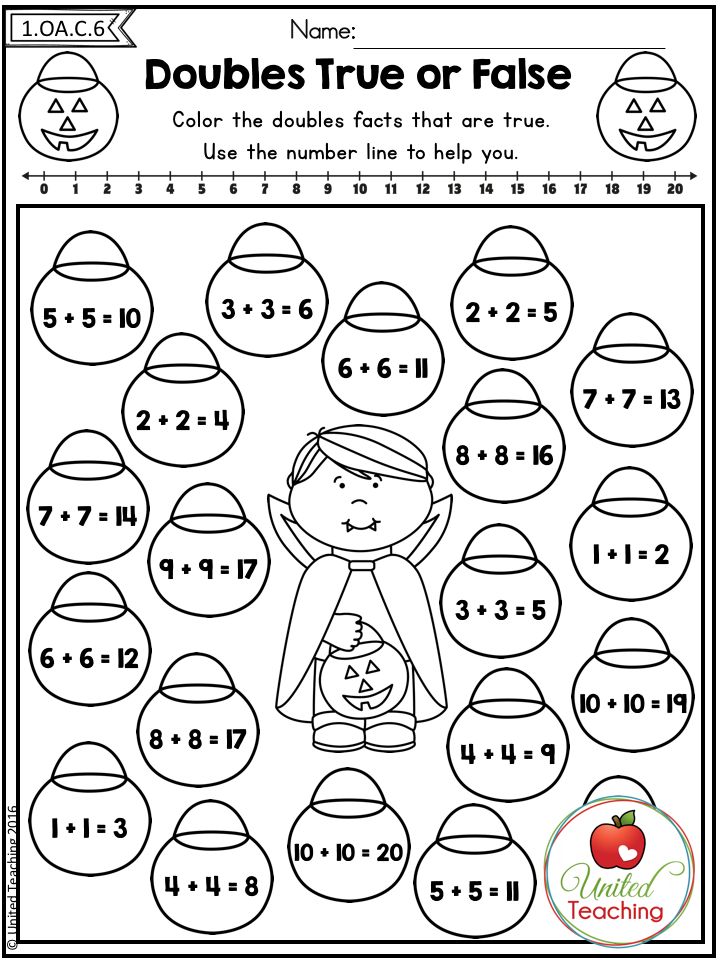 She took two steps. What is the difference between 3 and 1? How much more is it? And the number 5 compared to 3? It is desirable that the child himself see the pattern (adding 2 to each previous number). But if it doesn’t work out, don’t worry — explain. Calculate the next step together, and then let the baby go on his own.
She took two steps. What is the difference between 3 and 1? How much more is it? And the number 5 compared to 3? It is desirable that the child himself see the pattern (adding 2 to each previous number). But if it doesn’t work out, don’t worry — explain. Calculate the next step together, and then let the baby go on his own.
2. Math crossword
If a child can count to 10, they may be interested in doing a math crossword. nine0003
Print out the crossword. Tell your child how to work with a mathematical crossword puzzle, how the numbers fit into it. You can explain such concepts as "horizontal" and "vertical".
Explain that each row and column must have correct equalities. Emphasize that a mathematical crossword puzzle differs from the usual example in that an unknown number can appear anywhere in it.
Show that in a crossword it is better to solve the examples not in an arbitrary sequence, but by moving from one intersection to another. And it is very important to do everything right, because a mistake in one place will lead to inaccuracies in another. nine0003
nine0003
3. Mathematical game "Count the beads"
As in other examples, the picture can be printed.
There are two different tasks here.
On the left picture there are beads that you need to count and write the answers below, as shown in the first picture. Do not give the child the task right away - invite him to think about what the numbers below (in the first picture) mean. Perhaps he himself will find a correspondence between the number of beads and the number below. In this case, he will easily enter all the correct answers. nine0003
On the second, right, block of pictures, the number of beads is the same everywhere, and the number of filled beads is signed below. The kid can also guess about this on his own. After that, he will gladly color the required number of beads in each picture.
With this activity you can explain to your child what an abacus is and how to use it.
4. Mathematical game “Take the bear to the bear cub”
Examples are written on the ice.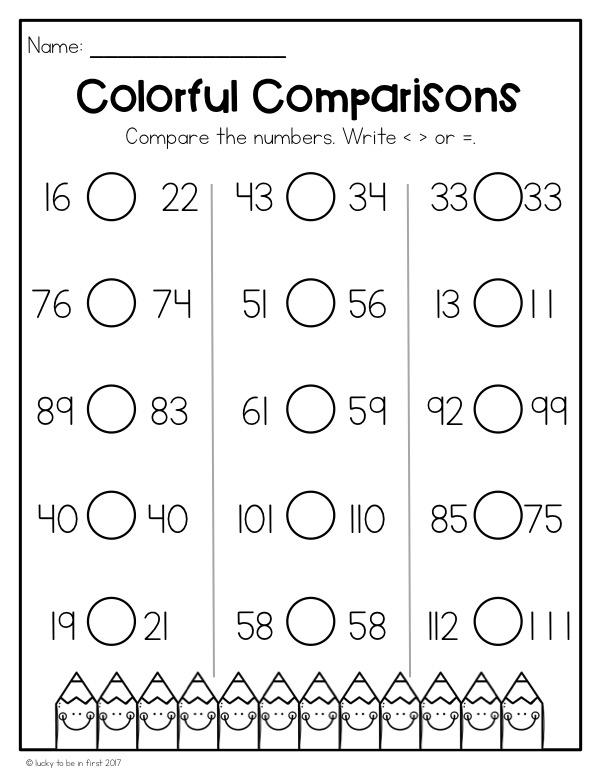 In this game, the child must complete each task and write the answer on the ice. After that, you can pave the way of the bear to the bear cub along the ice, on which the numbers 1, 2, 3 are written, and then in order up to 10.
In this game, the child must complete each task and write the answer on the ice. After that, you can pave the way of the bear to the bear cub along the ice, on which the numbers 1, 2, 3 are written, and then in order up to 10.
Math games for preschoolers 6-7 years old
Math games for children 6-7 years old are a bit more difficult and suitable for kids who can count to at least 20 and solve addition and subtraction problems in two steps.
1. Mathematical game "Insert the missing number"
The meaning of this mathematical game is to insert numbers into empty cells that come in sequence before, between or after a given number.
Thus, the child's idea of the "number line" is formed. nine0003
For convenience, you can first draw this line, on which numbers are indicated from left to right, increasing each time by one. Then the baby will understand what “before”, “between” and “after” means, and will easily do all the exercises.
2.
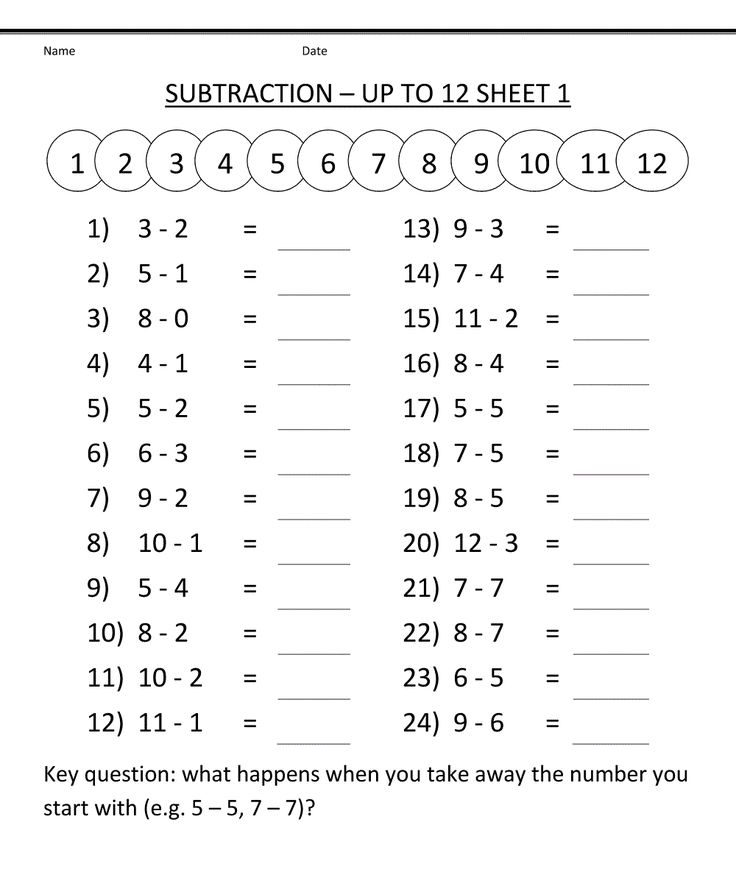 Mathematical game “Put fruits in baskets”
Mathematical game “Put fruits in baskets” Print the picture, cut out all fruits and baskets separately. The kid must solve a mathematical example that is written on a fruit and "put" it in the correct basket.
These examples show the child that the same number can be obtained in several ways.
Note that the example does not show the same number of ways to get different numbers. So, 7 is obtained by five options: 4 + 3; 7 - 0; 1+6; 2+5; 14 - 7. And 18 - three: 9 + 9; 20 - 2; 12 + 6.
Explain that there are other ways to get the number 18. Give an example or have the child come up with their own.
3. Mathematical game "Find a suitable umbrella"
In this math game, you need to match an umbrella to each cloud. To do this, the child must solve the examples written inside the cloud and the umbrella, and then place the cloud over the desired umbrella.
In this task, you can not cut anything, but simply connect pictures with the same answer.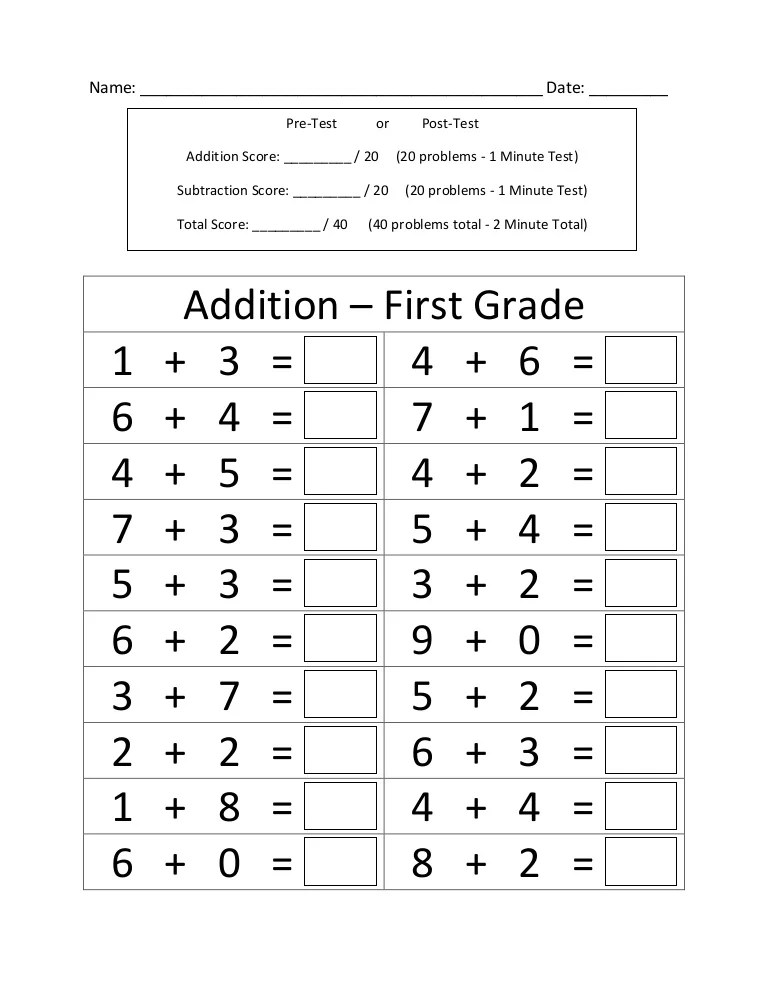 Each cloud corresponds to one umbrella.
Each cloud corresponds to one umbrella.
Math games for 1st grade
Math games for schoolchildren are suitable for children who can count up to 30, complete examples in several actions and have a basic understanding of fractions. nine0003
1. A chain of mathematical examples
On the path of the butterfly to the flower, do all the suggested actions. Some of the numbers are already in circles, others must be entered by solving the examples given above.
This math task is not for the little ones: here you need to be able to count to at least 30.
2. Math game "How much does a salad cost?"
The picture shows vegetables and their "value". Below are plates with a different set of vegetables. Invite the child to calculate how much each salad “costs”. nine0003
3. What is the fraction in the picture?
Pictures will help explain to your child what fractions are.
The images show circles divided into equal parts.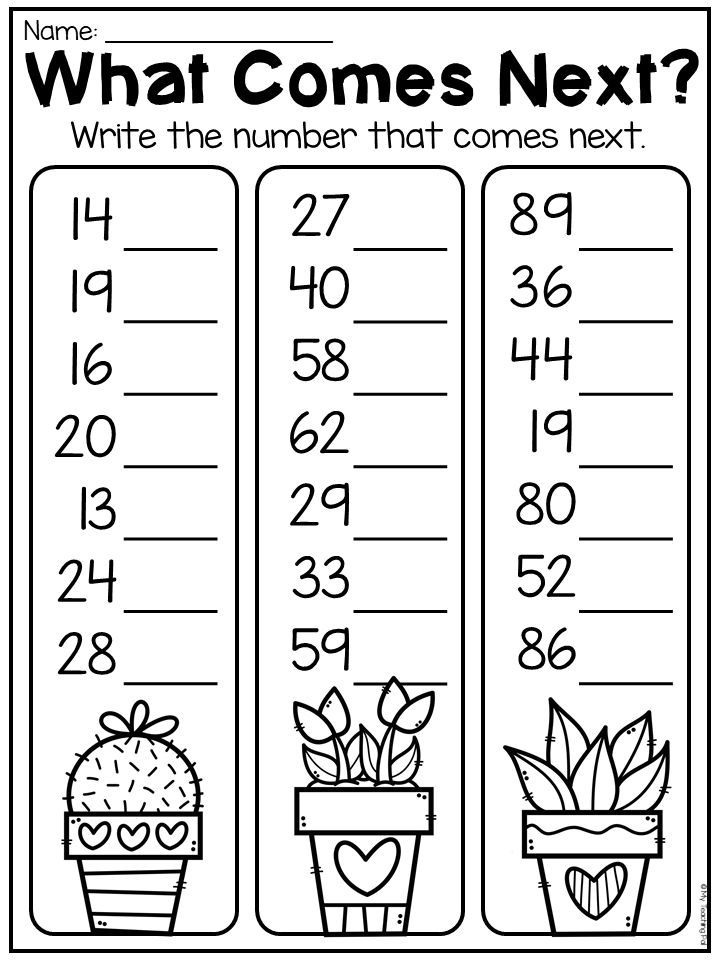 Some of them are painted over. First you need to calculate how many parts there are. Next - how many of them are painted over.
Some of them are painted over. First you need to calculate how many parts there are. Next - how many of them are painted over.
The essence of a fractional number is easy to explain in this way.
For the first example: the circle is divided into 4 parts; three out of four are shaded, i.e. three-fourths. This is referred to as 3/4.
Second example (below): there are 6 beats in the circle, four of the six are shaded - four sixths, 4/6. nine0003
Such an algorithm will allow the child to choose from the options presented the answer corresponding to each circle. To check how the kid understood the material, ask him to show an integer (not a fractional) number on one of the circles, painting over the required number of parts. He will cope with the task if he figured out how a fractional number is formed and how a fraction differs from a whole.
Umnasia offers a large number of mathematical problems for logic and ingenuity for primary and secondary school students.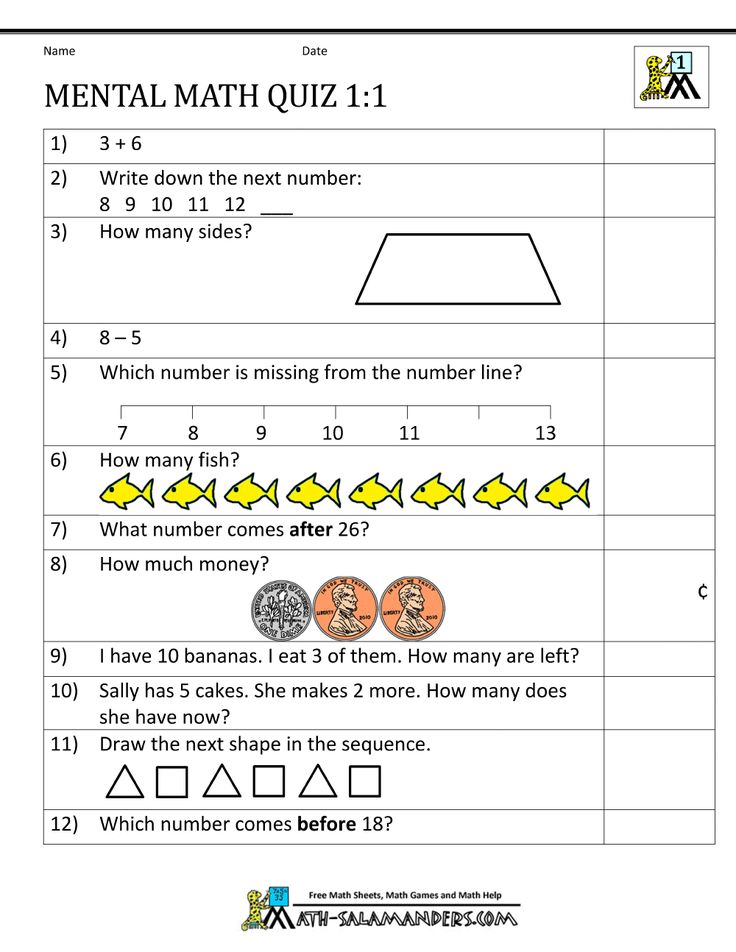 All tasks are presented in the format of an interactive story game with pleasant voice acting and colorful illustrations:
All tasks are presented in the format of an interactive story game with pleasant voice acting and colorful illustrations:
- logic tasks for grade 1
- logic tasks for grade 2
- logic tasks for grade 3
- logic tasks for grade 4
- logic tasks for grade 5
Mathematics and logic for children 7-13 years old
We develop logical thinking through the solution of plot mathematical problems in an interactive game format
learn more
tasks for counting and logic
Actual
Sending a child to the first grade, parents always dream that their child will study well and receive only the highest marks in all subjects. And if it is not at all difficult to teach a child to read, then it is not always easy for children to understand and solve mathematical problems. In order for a first-grader to succeed in mathematics at school, parents either hire a tutor, which is not always financially justified, or try to work with their children on their own.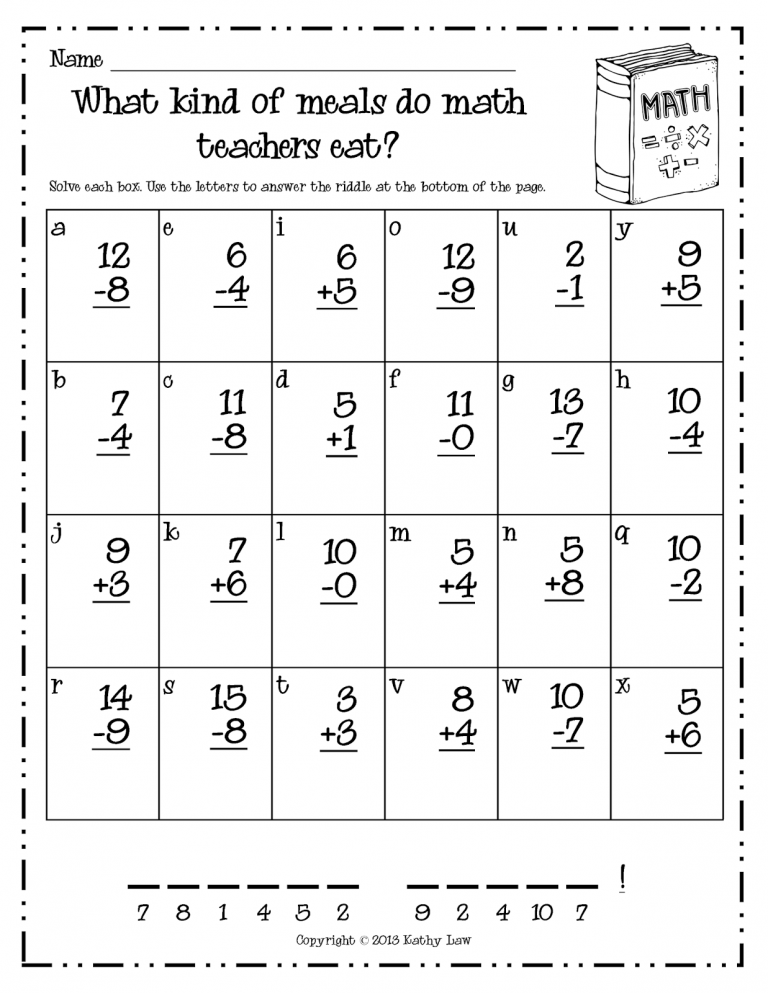 In this material, we will tell you how to pull up a first-grader in mathematics at home, talk about different types of problems and methods for solving them. nine0003
In this material, we will tell you how to pull up a first-grader in mathematics at home, talk about different types of problems and methods for solving them. nine0003
How to teach a child to count
Parents of first-graders should remember that at the age of 5–7 years, abstract thinking is still poorly developed in children. Remember the tale of Pinocchio, when he counted the apples that “Someone” allegedly took. Similarly, a 5–7-year-old child is not yet able to imagine the condition of the problem.
It is best to use visual aids that the child can see and touch. These can be counting sticks, cubes or pictures cut out of cardboard (for example, a set of cardboard hedgehogs, flowers, leaves, etc.). Lay out in front of the child the entire condition of the task from visual materials: there was so much, so much was added or taken away. So it will be easier for him to understand the condition of the problem and it will be easier to find its solution. nine0003
Another important point in teaching children is that the child must learn to distinguish tasks from each other by type.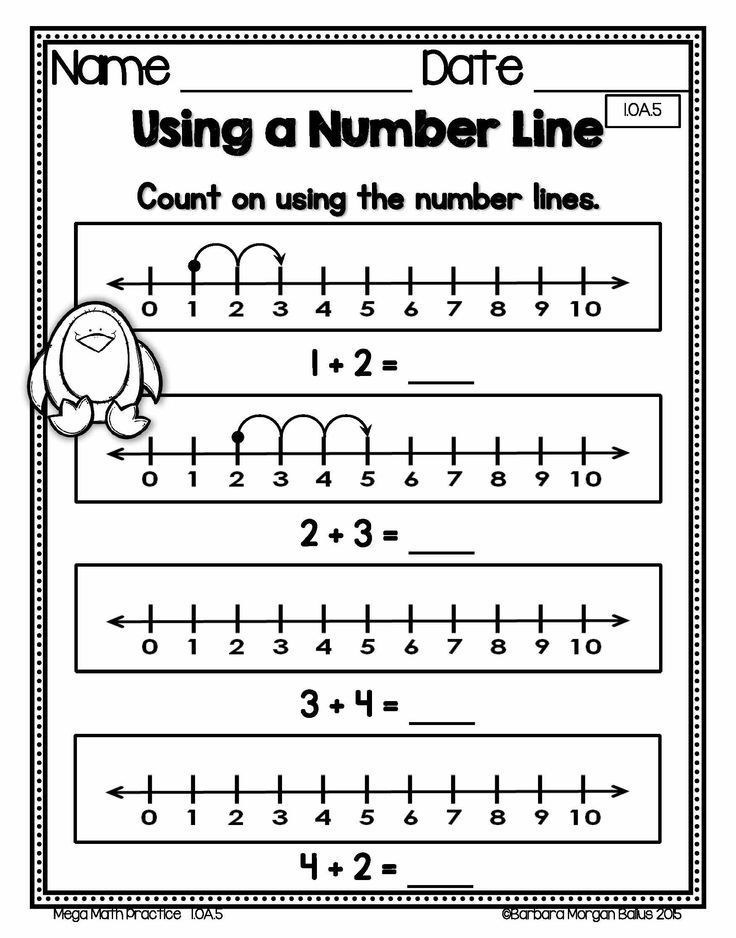 To do this, you can target it to some keywords. For example, if the task mentions the words "added", "brought", "arrived", "ran" and others denoting joining, then this is an addition problem.
To do this, you can target it to some keywords. For example, if the task mentions the words "added", "brought", "arrived", "ran" and others denoting joining, then this is an addition problem.
Understanding what type a particular problem belongs to, the child will learn to determine the required solution algorithm and successfully cope with the task. nine0003
Addition problems for first graders
As already mentioned, addition problems have a common feature - attachment. Another sign of addition tasks is the phrase “how much” in the task question.
The child must learn to clearly understand that if there is something added to the condition, then he needs to add up the available numbers. The child must understand what the first term, the second term and the sum are, and be able to find them in the task condition. nine0003
In order for a child to master mental counting well, he needs to regularly practice mental counting. If you are on vacation, at least once a day, ask him examples to develop memory.
You can even study on the way to school or in the section.
Five to ten examples daily will not tire a first-grader too much, but will bring many benefits for his further studies.
Below are addition problems for first graders. For convenience, we have divided them into options so that when studying at home, you can solve already completed tasks with your child. nine0003
Option 1
- Natasha read 5 books during the holidays, and Katya read 4 books. How many books did the children read together during the holidays?
- There were 6 apples on one branch of the apple tree, and 7 on the other. How many apples were there on both branches of the apple tree?
- There are potted flowers on the window in the classroom. The first window has 2 flowers, the second has 3 flowers, and the third has 1 flower. How many flowers are in the class?
- Alyosha's family has 2 boys and 1 girl. Tanya's family has 1 girl and 1 boy.
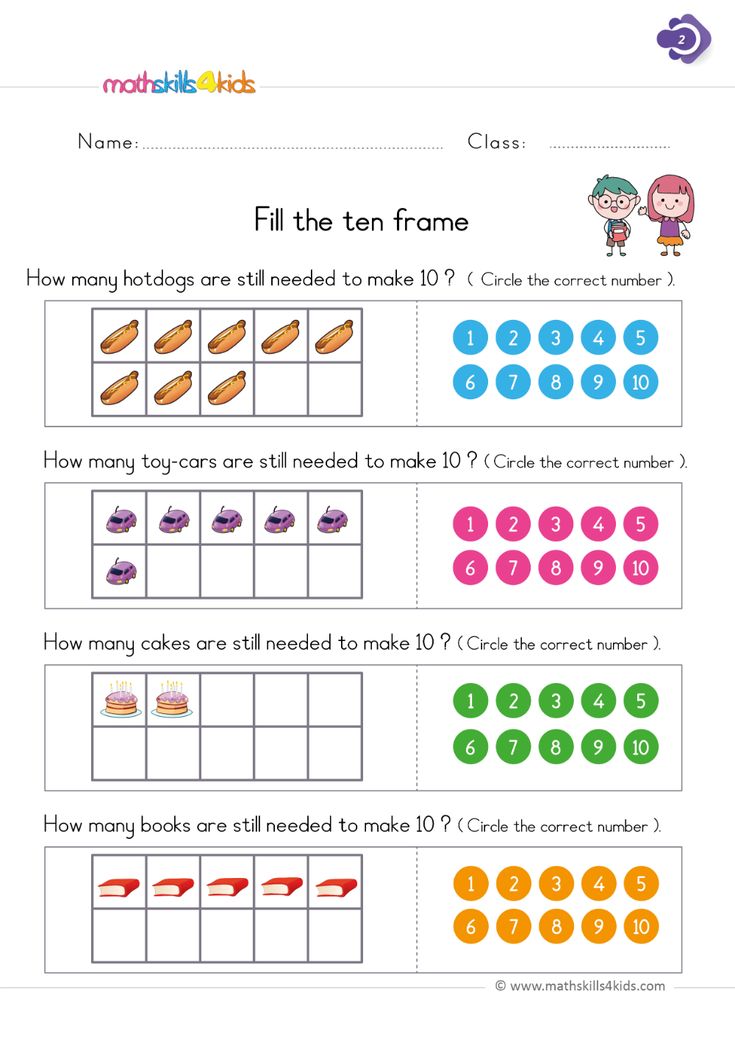 Serezha has 2 boys in the family, and Katya has only 1 girl. How many girls live in the families of all children? And how many boys? nine0125
Serezha has 2 boys in the family, and Katya has only 1 girl. How many girls live in the families of all children? And how many boys? nine0125 - According to the results of assessments for the 1st quarter in the 1-A class, 10 excellent students, 14 good students and 2 three students. In the 1-B grade - 8 excellent students, 12 good students and 3 three students. And in 1-B - 11 excellent students, 11 good students and 4 three students. How many excellent students, good students and three students in the entire parallel of the first classes?
Option 2
- Natasha is 8 years old, how old will she be in 3 years? In 4 years, in 10 years?
- In the stationery store, Nastya liked the felt-tip pens for 18 rubles. She has 10 rubles, 5 rubles, 2 rubles and 1 ruble. Will the girl have enough money to buy? nine0125
- 6 girls and 12 boys went for a walk. How many children went out for a walk?
- Sasha has a pack of counting sticks. Of these, 10 are red, 8 are blue and 12 are yellow.
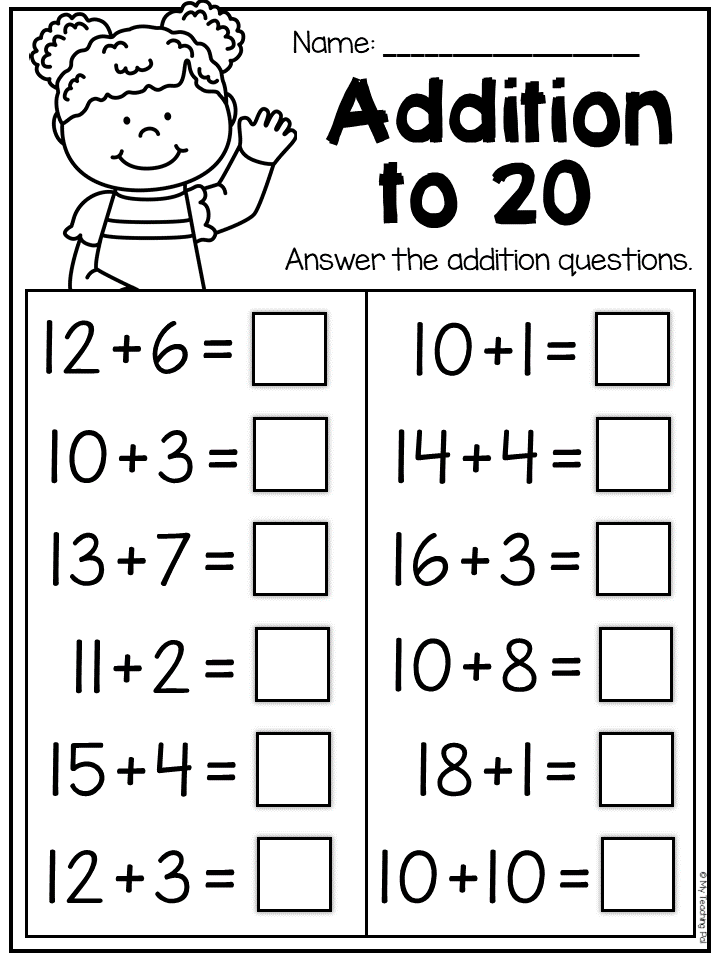 How many sticks are in the pack?
How many sticks are in the pack? - 4 girlfriends and 5 friends came to Polina's birthday party. How many children will sit at the festive table? (here it is important that the child does not forget to count Polina herself, the answer in the problem is 10 children).
Option 3
- Children came to the park and saw birds swimming on the lake: 8 swans and 12 ducks. How many birds were swimming in the lake? nine0125
- Children were planting saplings at school. Petya planted 2 seedlings, Anton planted 3, Natasha and Katya planted 2 seedlings. How many seedlings did the children plant in total?
- There were sweets in a box on the table. Masha ate 5 candies, Alena - 3 candies, Nastya - 6 candies, and Kolya ate 6 candies and the box was empty. How many sweets were in the box from the very beginning?
- There are 20 postcards in Marina's collection. Yulia also has 20 postcards. How many postcards do girls have?
- Seva had 20 stamps, he was presented with 4 more stamps.
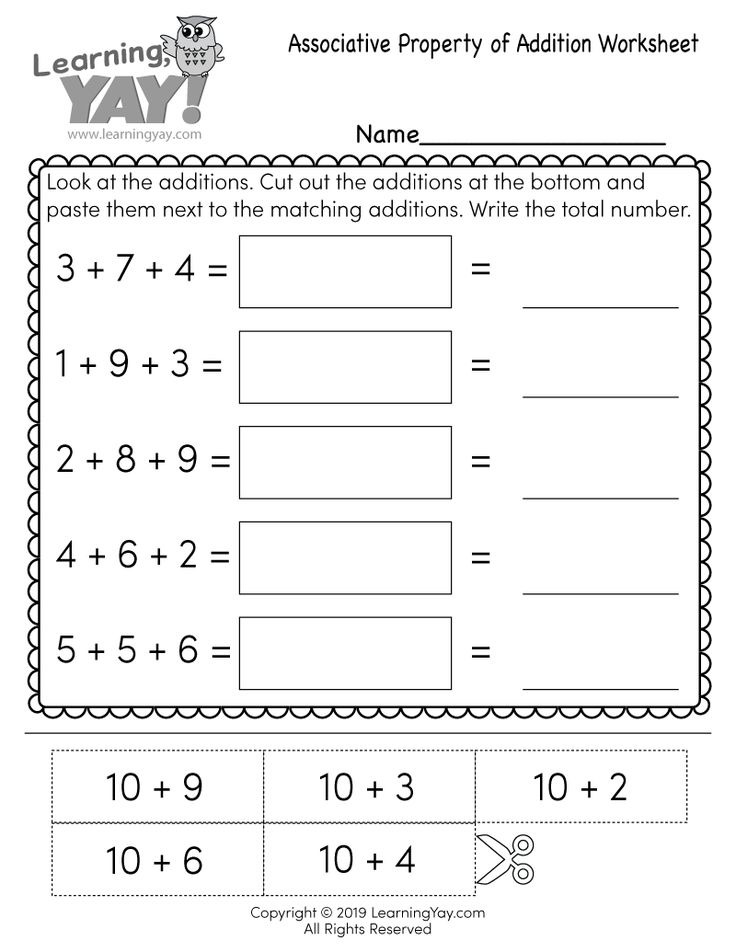 How many stamps did Seva have in total? nine0125
How many stamps did Seva have in total? nine0125
Option 4
- Mom planted 20 cucumber bushes and 17 tomato bushes. How many plant bushes did mom plant in total? On Monday, 8 tables were brought to the canteen, on Tuesday - 7 tables, and on Thursday - 10 more. How many tables did the canteen receive in a week?
- Pasha and dad went camping. On the first day they walked 12 km. In the second - 10 km, in the third - 8, and in the fourth - 11. What path did dad and Pasha cover?
- The zoo has 12 monkeys, 8 tigers, 2 elephants, 6 bears and 4 raccoons. How many animals are in the zoo? nine0125
Important! If every day you solve one version of addition tasks with a child, then on the control tests he will show brilliant results.
- There are 13 boys and 12 girls in Grade 1-A. There are 12 boys and 15 girls in grade 1-B, and 10 boys and 12 girls in grade 1-C. How many boys and how many girls are there in all first grades?
Subtraction tasks for first graders
Subtraction tasks also have their own characteristics and features.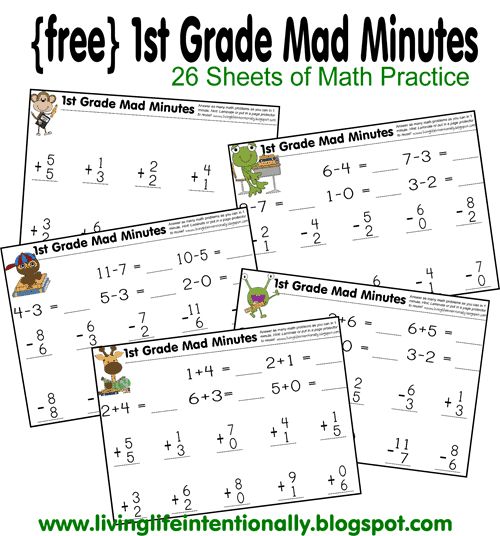 In the condition, you can always find some of the characteristic phrases: “how much is left”, “there were so many, of them ...”, “there were so many, so many left / flew away / ran away / deteriorated, etc.” and others. Here it is also important to understand what the first term, the second term and the sum are, to be able to find them in the task condition, because subtraction problems are the inverse of addition. And the concepts here are slightly different: reduced, subtracted, difference. nine0003
In the condition, you can always find some of the characteristic phrases: “how much is left”, “there were so many, of them ...”, “there were so many, so many left / flew away / ran away / deteriorated, etc.” and others. Here it is also important to understand what the first term, the second term and the sum are, to be able to find them in the task condition, because subtraction problems are the inverse of addition. And the concepts here are slightly different: reduced, subtracted, difference. nine0003
Below are subtraction problems for first graders. For convenience, we also divided them into options so that when doing homework, children can solve already completed tasks.
Here there are tasks both for finding the remainder (“how much is left”) and for decreasing (“by how much the number has changed”).
Option 1
- Andrei lives on the 7th floor, and Alena 3 floors below. What floor does Alena live on?
- Volodya has 17 cars, but Sasha has none.
 Volodya gave Sasha 8 cars. How much does he have left? nine0125
Volodya gave Sasha 8 cars. How much does he have left? nine0125 - Natasha is 12 years old, and her brother Seryozha is 7 years younger. How old is Seryozha?
- There were 10 apple trees in the garden, and 4 less pear trees. How many pears grew in the garden?
- On the first day Mila read 24 pages in the book, and on the second day she read 3 less. How many pages did Mila read on the second day?
Option 2
- Children receive books in the school library. Petya took 8 books, Alyosha took 2 books less than Petya, and Vanya took 3 books more than Alyosha. How many books did each boy take? How many books did they take together? nine0125
- There were 25 berries in a vase on the table. Marina ate 4 berries, Alice ate 6 berries, Mila ate 3 berries, and Katya finished the rest of the berries. How many berries did Marina and Alice eat? Mila and Katya How many berries did Katya eat?
- There were 10 plates on the table and 6 less in the sink.
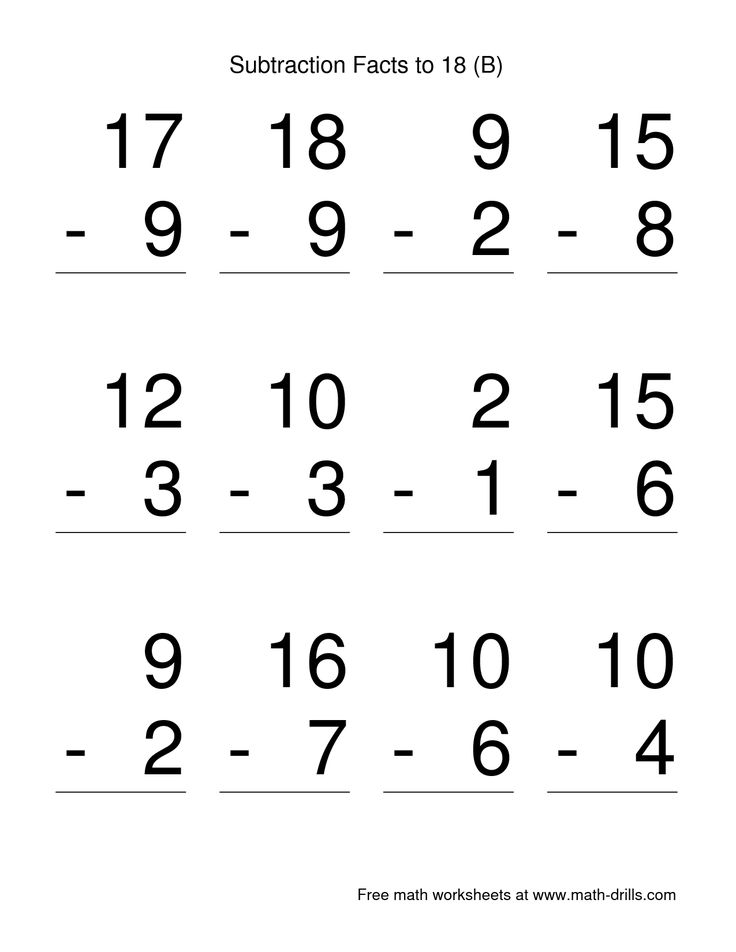 How many dishes were in the sink?
How many dishes were in the sink? - Serezha is 15 years old, his sister Larisa is 4 years younger. And the youngest brother Boris is 7 years younger than Larisa. How old are Larisa and Boris?
- Mom planted 30 cucumber bushes, 17 bushes sprouted. How many cucumber bushes were lost in total? nine0125
Option 3
- The children went to the forest for mushrooms. Dima found 10 russula and 7 white mushrooms. Tanya found 3 less russula and 2 less white ones. How many and what kind of mushrooms did Tanya find?
- The first house has 12 entrances, the second house has 4 entrances less than the first one. And in the third house there are 6 entrances less than in the first. How many entrances are in each of the houses?
- There are 23 apples in the first basket, and 11 less apples in the second. How many apples are in both baskets? nine0125
- 12 girls took part in the performance, and 3 less boys. How many boys were in the play?
- There are 15 roses in one vase and 8 less in another.
 How many roses are in the second vase?
How many roses are in the second vase?
Option 4
- Sweets cost 30 rubles, and bread is 15 rubles cheaper. How much does bread cost?
- Grandmother baked pies. With potatoes 30 pieces, with jam 10 less than with potatoes, and with cabbage 5 less than with potatoes. How many and what kind of pies did grandma bake? nine0125
- There were 20 men on the bus. There were 5 fewer women than men, and 7 fewer children than women. How many people were on the bus in total?
- Children receive books in the school library. Sasha took 5 books, Misha took 2 books less than Sasha, and Serezha took 2 books more than Misha. How many books did each boy take? How many books did they take together?
- 20 buckets of water were used to water the garden. 12 buckets went to the beds with cabbage. How much went to the beds with carrots? nine0125
Comparison tasks for first graders
- Comparison tasks are aimed at finding a number that is smaller or larger than the original one.
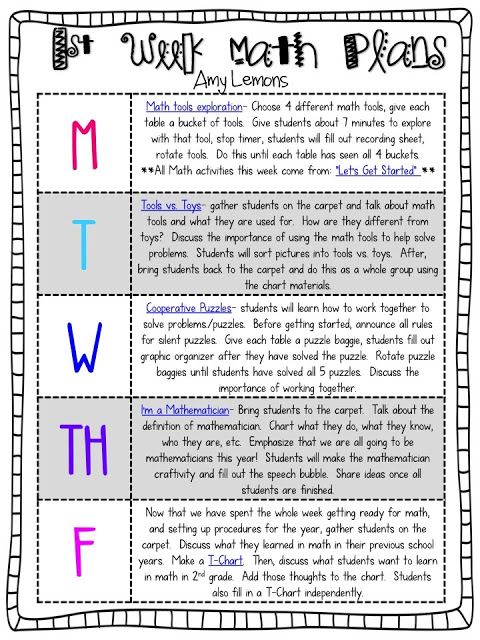 In principle, to some extent they can be attributed to addition or subtraction tasks, so we decided not to describe these tasks by options, but to give several similar examples:
In principle, to some extent they can be attributed to addition or subtraction tasks, so we decided not to describe these tasks by options, but to give several similar examples: - There were 10 cats sitting on the roof: 7 black and 3 grey. How many more black cats than gray ones?
- In the village, my grandmother has chickens and ducks. There are 18 chickens and 15 ducks. How many more chickens than ducks. nine0125
- Tanya has 3 dolls, and Dina has 4 more. How many dolls does Dina have? How many dolls does Tanya have less?
- Marina is 14 and Misha is 9. How many years is Marina older than Misha?
- There are 8 cars in the garage. Of these, 3 trucks and 5 cars. How many fewer trucks than cars?
- Dima was presented with gifts for his birthday. First, mom and dad gave 2 gifts, then friends brought 5 gifts. How many more gifts did Dima have?
- On the first day of vacation, Yura solved 5 problems, on the second - 7, and on the third - 2.
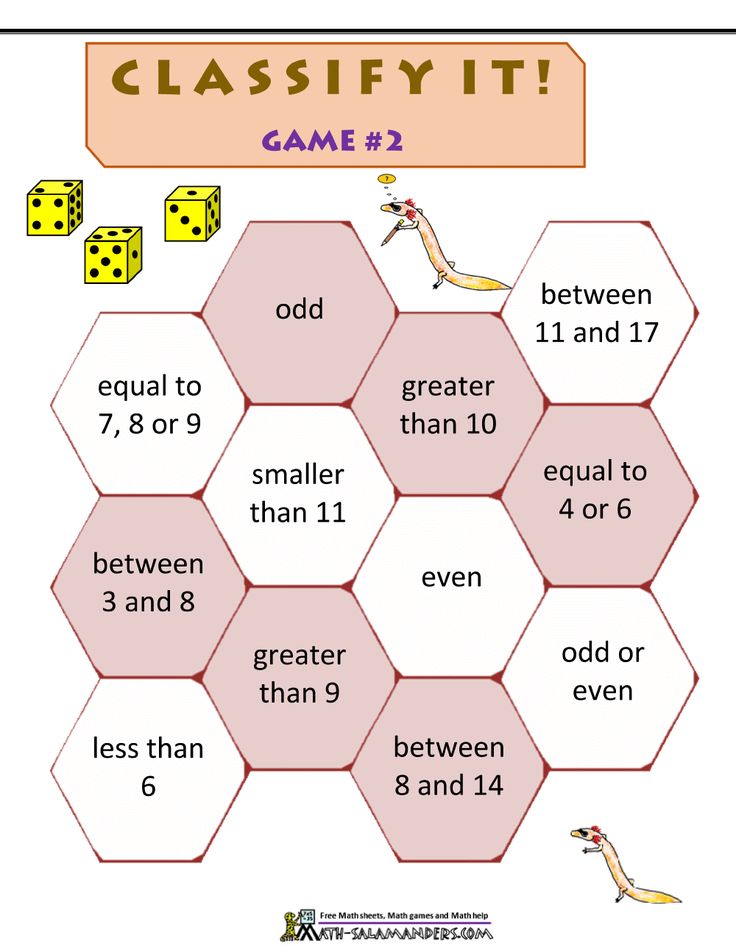 How many more problems did Yura solve on the second day? nine0125
How many more problems did Yura solve on the second day? nine0125 - How many problems less than the first did Yura solve on the third day? And how many fewer problems did he solve on the third day than on the second?
- Sonya had 3 oranges and 10 apples. How many more apples than oranges?
- Olya has 3 hares and 2 squirrels. Mila has 5 dolls and 1 bear. Who has more toys and by how many?
- Cows were grazing in the meadow. 7 goats came to them and in total there were 15 animals in the meadow. How many cows were there?
Logic tasks for first graders
Articles with teachers' recommendations and lists of exercises and tasks have already been devoted to the development of logical thinking. Here we present several logical tasks that will allow not only to develop, but also to train the logic of first graders.
- Which is easier? A kilogram of cotton wool or a kilogram of nails? Tea, compote and cocoa were poured into a glass, mug and cup.
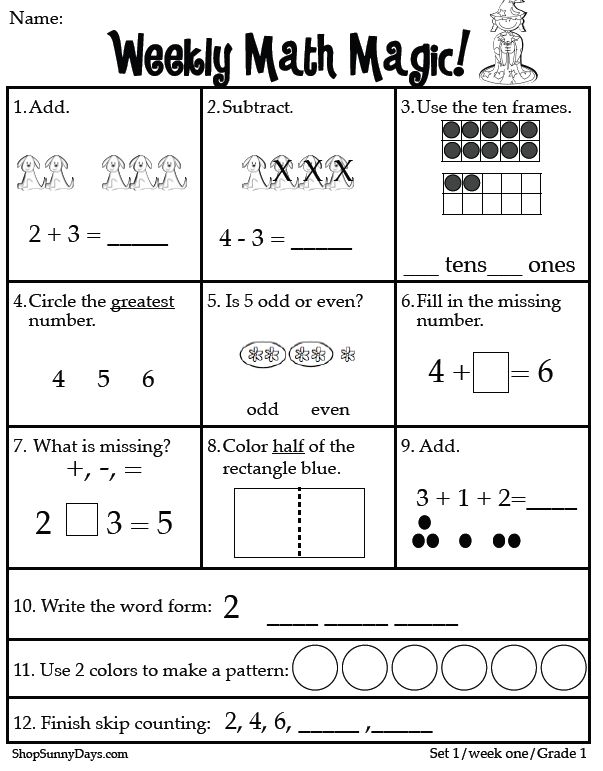 There is no cocoa in the mug. There is no cocoa in the cup, and no compote. What was poured into what?
There is no cocoa in the mug. There is no cocoa in the cup, and no compote. What was poured into what? - How many fingers are on 3 hands? nine0125
- How many paws do 4 cats have?
- How many hands do 10 children have?
- Lena and Misha saw 2 ships in the sea. How many ships did each of the children see?
- Kitten tails sticking out from under the bed. How many kittens are there if 7 tails are visible?
- Dogs hid behind the fence. You can see 12 paws from under the fence, how many dogs are behind the fence?
- There are 5 peaches and 8 pears on the table. How many apples and plums will there be in total?
- There are 2 glasses of milk on the table. Petya drank the milk and put the camp on the table. How many glasses are on the table? nine0125
- Vanya left the school. 3 girls walked towards him. How many children left school?
- Seven first graders went from home to school: Petya, Masha, Liza, Grisha, Tolya, Misha and Larisa, and 4 second graders: Seryozha, Tanya, Mila and Vanya.
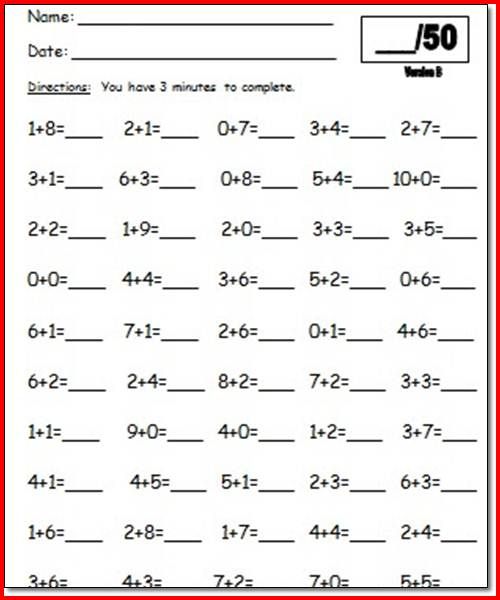 How many girls went to school?
How many girls went to school? - To get into the theater 2 daughters and 2 mothers needed 3 tickets. How could this happen?
- Misha is 2 years older than Lena. How much older will he be than Len in 5 years?
- Lena and Milana planted 10 flowers each and finished the work at the same time. Milana started work earlier. Which of the girls worked slower? nine0125
Instead of a conclusion
The mathematical development of first-graders is of great importance in their education. By solving examples and problems, the child acquires new experience, knowledge and skills. Learns to think logically and mathematically, find solutions from various situations, more successfully master related sciences in further studies.
Children's progress should not be left to chance, and every effort should be made to help them in this difficult task, like studying in the first grade. After all, it was at this time that the foundation was laid for his further studies at school.